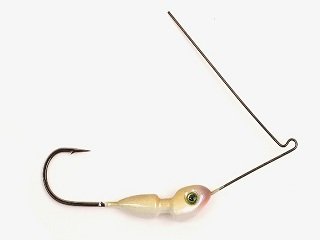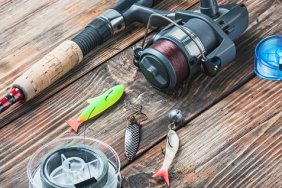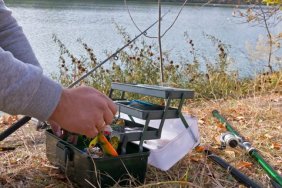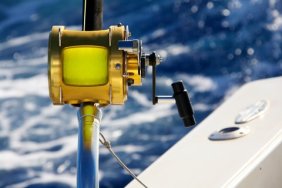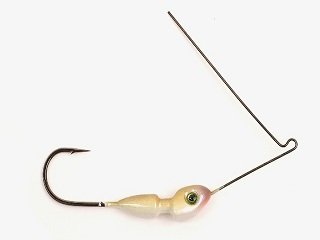 In Part One of Anatomy of a Spinnerbait, I broke down a few of the components that comprise a spinnerbait and described how they contribute to the overall effectiveness of the lure. Today, I’ll round out the lesson with a few major pieces of the puzzle and hopefully, afterward, those anglers who, like myself, are ever interested in how things work will have a clearer picture of how the sum of a spinnerbait’s parts come together to make one amazing lure. Keep reading to learn more about the anatomy of a spinnerbait!
In Part One of Anatomy of a Spinnerbait, I broke down a few of the components that comprise a spinnerbait and described how they contribute to the overall effectiveness of the lure. Today, I’ll round out the lesson with a few major pieces of the puzzle and hopefully, afterward, those anglers who, like myself, are ever interested in how things work will have a clearer picture of how the sum of a spinnerbait’s parts come together to make one amazing lure. Keep reading to learn more about the anatomy of a spinnerbait!
The backbone of a spinnerbait is the wire frame. Made of stainless steel of titanium, the frame serves as the attachment point for many of the lure’s components. Stainless steel frames tend to offer more vibration and flexibility, which can be beneficial with large fish, while titanium frames offer lightweight strength. The diameter and length of a frame also plays a role. Thinner frames allow for more vibration in the water, but thicker ones are more durable and enable you to pull the lure through cover and bounce it off objects without worry. Most spinnerbait arms fall within the 2 to three-inch range, which position the hook directly below the blade. Shorter frames can be useful, however, with different techniques, such as the helicopter tactic.
The body of a spinnerbait is comprised of a lead jighead that can vary in shape, size, and color, depending on the angler’s preferences in a given situation. The weight will change with desired depth and retrieval speed. Most anglers throw heavier spinnerbaits when fishing deep and fast. Smaller ones work well when a slow, shallow approach is called for. The color pattern will depend on water clarity, season, and really whatever seems to work on a given day.
As far as hooks go, try to stick with a strong model, with a wide gap and a round bend. Furthermore, a trailer hook is usually a good addition, as well, and can mean the difference between a roll and a hook up. Some dress the trailer hook and others leave it bare. Experiment with both until you find a combination that works.
Last, but certainly far from least, is the skirt. Spinnerbait skirts do more than just make the lure look pretty, and add a lot of action to the presentation. Skirts come in hundreds of color patterns, each of which has its own effectiveness in certain situations. Try to make sure the skirt is long enough to cover the hook, but not too long that a strike may not even hit the hook. Also, thinning out the skirt by a dozen strands or so can have a big impact in clearer water, where dark water requires more bulk and thus, a thicker skirt. Also, you can mix and match strands of skirt material to customize your own one-of-a-kind patterns, which is something I’ve covered in the past.
There’s quite a bit that goes into a fishing lure, and clearly, spinnerbaits are no exception. By learning a little more about how each piece of a spinnerbait contributes to the lure’s performance, hopefully, anglers will better understand the lure itself. Who knows? Learning a bit more might even make you a better angler when throwing a spinnerbait!
